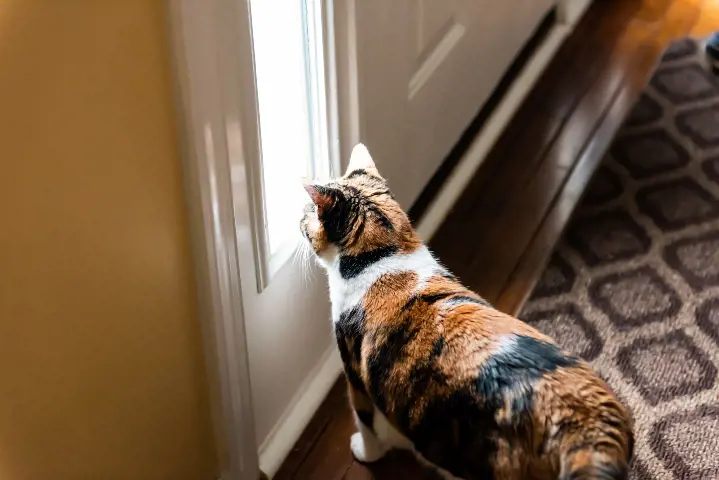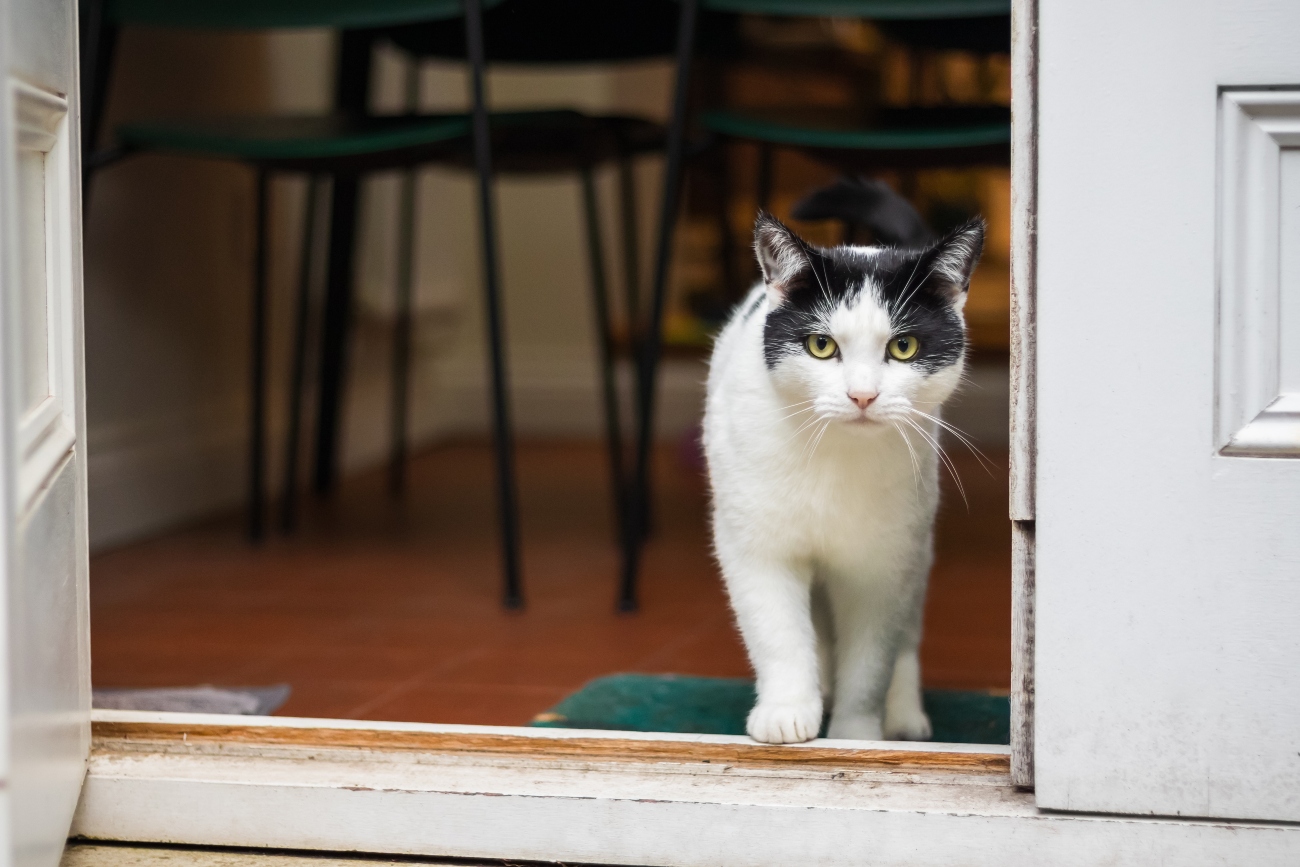An essential guide on how to let your cat outside
7th December, 2023

Knowing how to let your cat outside for the first time can be a daunting experience for both you and your feline friend. The outside world presents a whole new environment full of fascinating and sometimes scary encounters.
It's crucial to ensure your cat is ready for this new adventure and that you've taken all necessary precautions to keep them safe.
In this guide, we'll walk you through the various strategies and considerations for letting your cat outside, along with expert advice on how to handle potential challenges.
Understanding your cat's readiness for the outdoors
Age and maturity
The age and maturity of your cat are essential factors to consider when deciding to let them outside. For kittens, the advised age is around six months after they've been fully vaccinated and neutering needs to be considered first to avoid unwanted litters or roaming.
This is when they are mature enough to navigate and interact with the outside world. On the other hand, adult cats should have a settling period of 2-6 weeks in their new home before venturing outside. This allows them to adjust and become comfortable with their new environment.
Personality and confidence
Cats, much like humans, have unique personalities. Some are naturally adventurous and may be eager to explore outdoors, while others could be more timid and hesitant.
It's essential to understand your cat's personality and confidence level before deciding to let them outside. If your cat is showing signs of restlessness and frequently waiting by the door, it might be an indication that they are ready to explore the outside world.
Preparing your cat for the outdoors
Vaccinations and neutering
Your cat's health is paramount. Ensure your cat is up-to-date on all their vaccinations before they venture outside. Vaccinations protect them from common feline diseases they could potentially contract while roaming around. Neutering is also crucial, especially for male cats, to prevent straying and reduce aggression.
Identification and microchipping
Make sure your pet is easily identified. Microchipping your cat is a critical step in preparing them for outdoor exploration. This simple procedure can significantly increase the chances of reuniting with your cat if they wander off too far. A quick release collar with an ID tag and having your cat microchipped will help should they stray a little too far from home.
Preparing the environment for your cat
Safe and inviting outdoor space
Before you let your cat outside, ensure that your garden or yard is cat-friendly. Remove any potentially harmful items, and consider installing a cat flap in a door or window for easy access. If you have a pond, cover it or create a low edge so your cat can climb out if needed.
Training and familiarising
Train your cat to respond to calls or signals. You can do this by calling their name and rewarding them when they come to you. This will be helpful in getting them to return home once they start exploring outside.
The big day: Letting your cat outside for the first time
Choosing the right time
The first time you let your cat outside should be a calm and quiet day, ideally before feeding time. This way, your cat will likely return home when you call them for food.
Initially, let them outside for short supervised periods and gradually increase their time outdoors as they gain confidence.
Supervision and patience
It's crucial to supervise your cat during their initial outdoor adventures. Be patient and let your cat explore at their own pace.
If they want to go back inside, even if they've only been outside for a short while, let them. This reassurance will help them build confidence.
Training your cat to use a cat flap
Introduction and rewards
Providing clear access in and out helps provide reassurance and habit for cats. A cat flap or open access point offers security. Introduce your cat to the cat flap gradually.
Encourage them to approach and pass through it by using treats or their favourite toy. Reward them each time they make progress.
Mastering the flap
Once your cat is comfortable with the open flap, start teaching them how to push through a closed one. Most cats might intuitively understand this, while others may need further guidance and rewards.
Ensuring your cat's safety outside
Dealing with potential threats
Outdoor exploration exposes your cat to potential threats such as traffic, other animals, and harmful substances.
To minimise these risks, consider keeping your cat indoors overnight when most accidents occur, and ensure they are up-to-date with their flea, worm, and vaccination treatments.
Coping with weather conditions
Both hot and cold weather can pose risks to your cat. In the summer, provide shade in your garden and protect your cat from sunburn. In the winter, offer shelter and make sure any outdoor water sources haven't frozen over.
Ongoing training and rewards
Keep training your cat to come when called, even when they're comfortable with being outside. This can be particularly useful if they wander too far. Make sure to reward them each time they respond to your call.
How to let your cat outside after moving
Moving to a new home can be stressful for cats. To help them adjust, avoid washing their bedding and blankets right before you move.
The familiar scent will play a critical role in making them feel safe and settled in the new home. Once settled, follow the same steps as above to let your cat outside.
Cat insurance and health check-ups
To prevent yourself from having to deal with unexpected vet bills, having cat insurance may relieve some of that financial strain. You can get a cat insurance quote for your furry friend through our website.
Conclusion

Understanding how to let your cat outside safely involves careful preparation, patience, and a good understanding of your cat's personality and readiness.
By following this guide, you can ensure a smooth and safe transition for your cat from the indoors to the exciting world outside.
Helpful Pages
Recent Posts
Pet Insurance Quote
- 98% claims paid *
- Claims paid directly to vets
- 24/7 vet video consultations
- Interest free monthly payments




